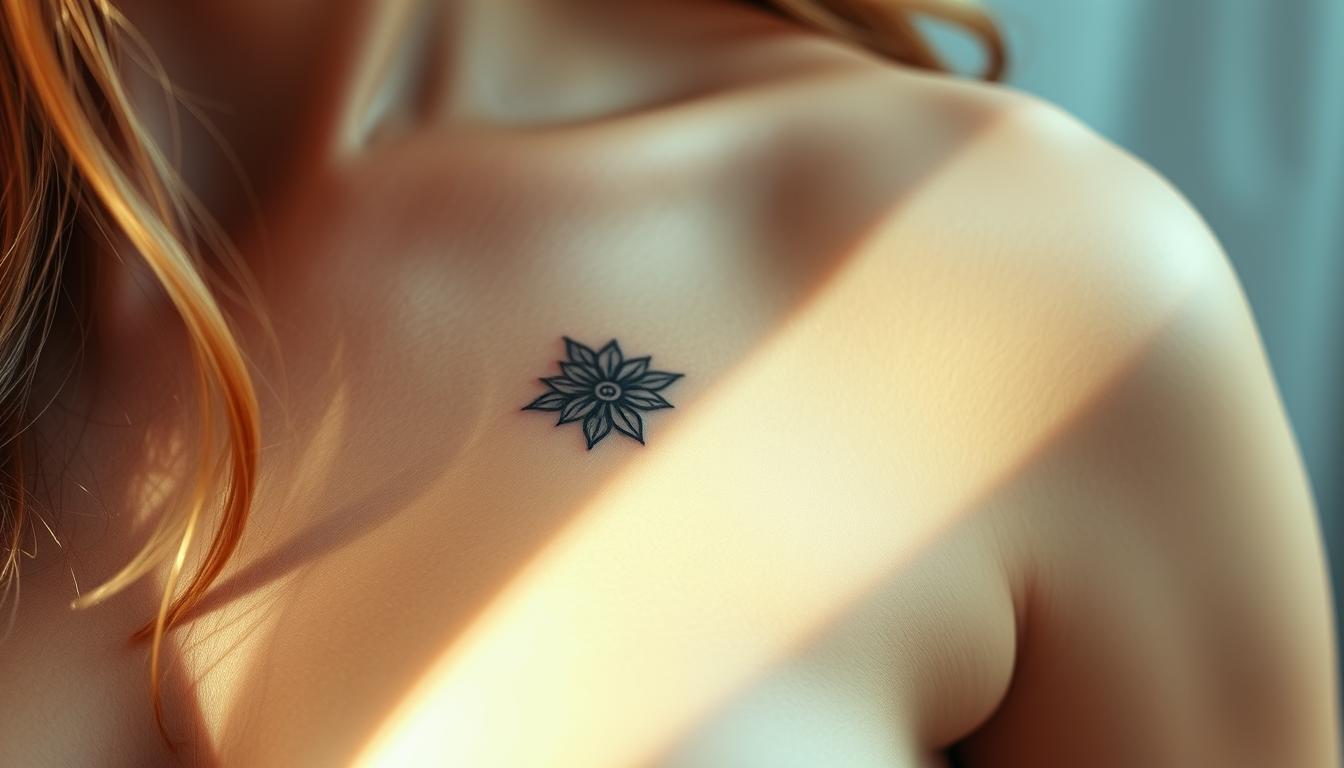
For many women completing breast reconstruction, this specialized procedure offers a meaningful way to reclaim their body’s natural appearance. Unlike traditional body art, these designs focus on restoring symmetry and confidence after surgery or medical treatment.
Whether you’ve had a mastectomy, lumpectomy, or preventive surgery, this final step in your journey can help you feel whole again. The process involves careful color matching and precise placement to create realistic results that align with your skin tone and anatomy.
Timing matters – most medical teams recommend waiting until your chest area has fully healed. You’ll also discover options like 3D techniques or medical pigmentation, each with unique benefits we’ll explore later.
Beyond the physical transformation, many find emotional closure through this art form. It’s not just about appearance; it’s about celebrating your strength and moving forward with renewed self-assurance.
Key Takeaways
- Final step in breast reconstruction for natural-looking results
- Customized to match skin tone and individual anatomy
- Recommended after full healing from prior surgeries
- Offers both physical symmetry and emotional healing
- Two primary techniques available (3D and medical tattooing)
Introduction: Redefining Your Confidence After Mastectomy
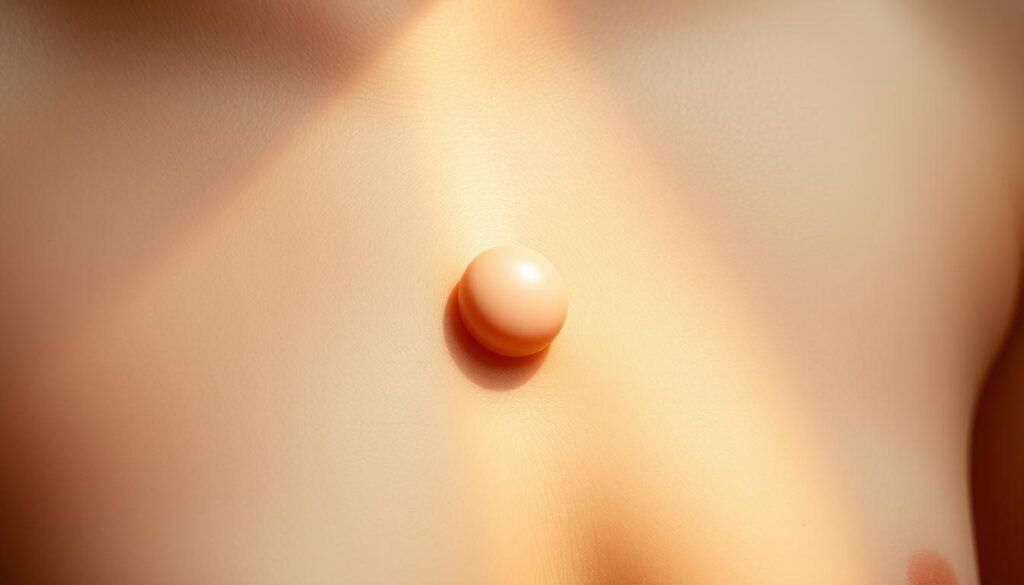
Healing after a mastectomy involves more than physical recovery—it’s about rebuilding your connection to your body. For some, recreating natural-looking features becomes a powerful step toward feeling whole again. Whether through surgical methods or specialized artistry, this choice lets you define what completion means to you.
The Role of Nipple Tattoos in Breast Reconstruction
Medical tattooing serves as the final brushstroke in many reconstruction journeys. Artists carefully match pigments to your skin tone, creating subtle shadows and textures that mimic natural anatomy. This attention to detail helps many women feel “undressed” in a way that aligns with their pre-surgery self-image.
How Recreating Your Nipple Enhances Body Image
Restoring the areola’s appearance can transform how clothes fit and how you carry yourself. Bras lay smoother, swimsuits feel more natural, and that lingering self-consciousness often fades. One survivor shared, “Seeing symmetry again made me realize how much I’d missed feeling balanced.”
There’s no right timeline—whether you decide soon after reconstruction or years later, what matters is honoring your emotional readiness. This choice isn’t about obligation; it’s about reclaiming ownership of your story after breast cancer.
The Nipple Tattoo Procedure and Techniques
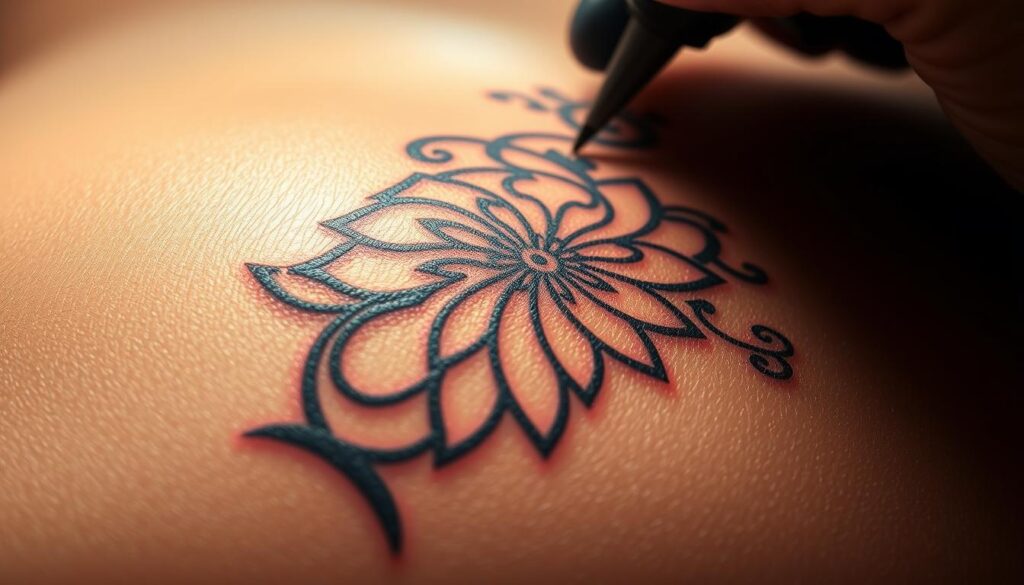
Modern restoration techniques blend artistry with medical precision to recreate natural-looking features. Specialists focus on personalized approaches that align with your unique anatomy and healing journey.
Traditional 3-D Tattooing vs. Surgical Reconstruction
3D techniques use layered pigments to craft optical illusions of depth without raised tissue. Artists employ micro-needles to mimic textures like Montgomery glands, creating shadows that make designs appear lifelike. This method works well if you prefer avoiding additional surgery.
Surgical reconstruction adds physical projection first, followed by pigment application. “The two approaches complement each other,” notes a certified medical artist. “Some choose both – structure from surgery and realism from color blending.”
Innovative Methods for Creating Natural-Looking Areolas
Advanced shading methods now replicate subtle skin variations and color transitions. Artists mix custom pigments during your session to match your complexion perfectly. They even imitate the slight unevenness found in natural areolar tissue.
New tools allow precise stippling effects that resemble tiny bumps when viewed up close. These details remain flat to the touch but look three-dimensional in mirrors or photos. The result? A restored appearance that aligns with your body’s story.
Preparing for Your Nipple Tattoo and Reconstruction Journey
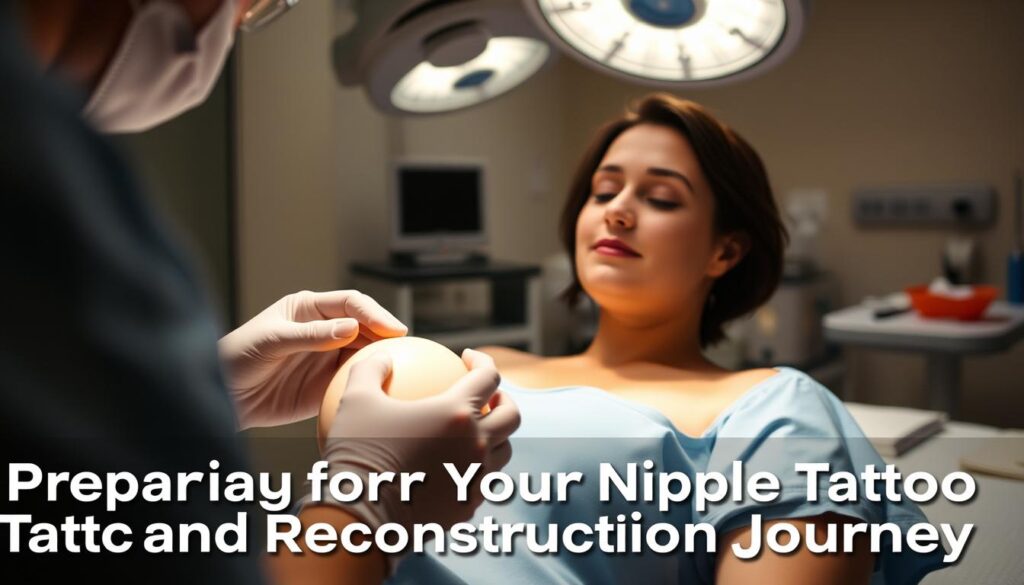
Timing plays a critical role in achieving the best results from your restoration process. Most plastic surgeons advise waiting 3-4 months after breast reconstruction surgery before considering this step. This allows tissues to settle into their final position and ensures proper healing.
When to Schedule Your Procedure Post-Reconstruction
Your medical team will confirm when your skin is ready. “We wait until swelling subsides and scars soften,” explains a board-certified plastic surgeon. Radiation treatments or complications might extend this timeline. Use this waiting period to research artists and collect reference images.
Key Pre-Procedure Tips and Expectations
Ensure you’re completely happy with your reconstruction surgery results first. Future procedures could alter pigment placement. Discuss color preferences and symmetry goals with both your surgeon and artist during consultations.
Clear communication helps match expectations. Bring photos showing your desired outcome, including natural variations in tone and texture. This collaboration between medical and artistic professionals often leads to the most satisfying results.
Understanding the Nipple Tattoo Appointment Experience
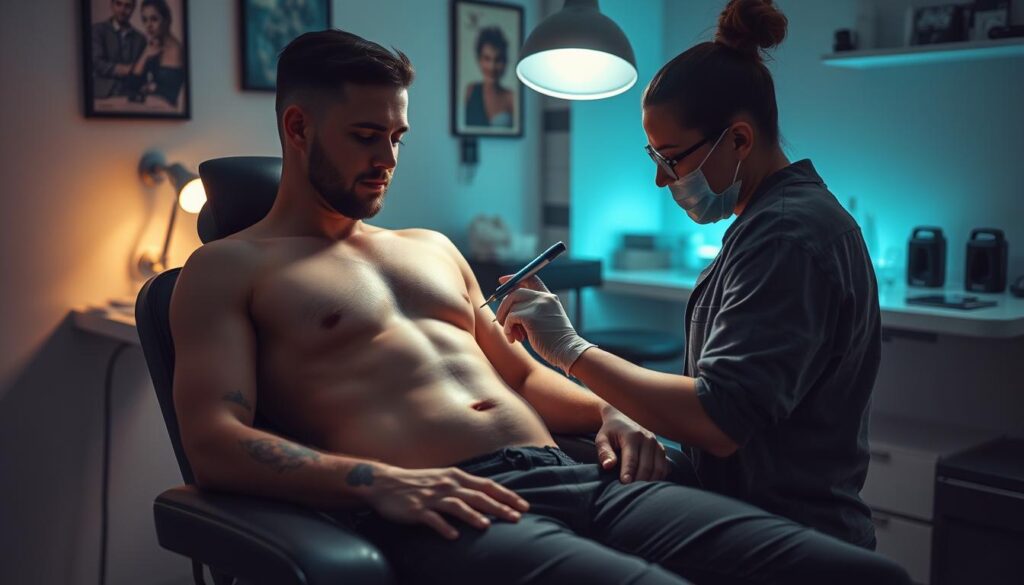
Your restoration journey reaches its final stage with a carefully planned session focused on personalization. This appointment blends technical skill with artistic vision to create results that feel authentically yours.
Step-by-Step Overview of the Tattooing Process
Most sessions last 90 minutes to two hours. The first half involves discussing your vision for size, placement, and color. Your artist might use temporary stencils or silicone guides to help visualize the design.
Pigment blending becomes a collaborative process. Specialists mix hues to complement your skin tone, often referencing existing features if applicable. “We create color recipes as unique as fingerprints,” shares a certified medical tattooist.
The application phase typically spans 30 minutes per side. Layered shading techniques build depth while maintaining a flat surface. Many clients describe the sensation as light vibration rather than discomfort.
Throughout the procedure, your specialist makes adjustments for symmetry and proportion. This real-time refinement ensures the final result aligns perfectly with your expectations and anatomy.
Post-Tattoo Care and Recovery Guidelines
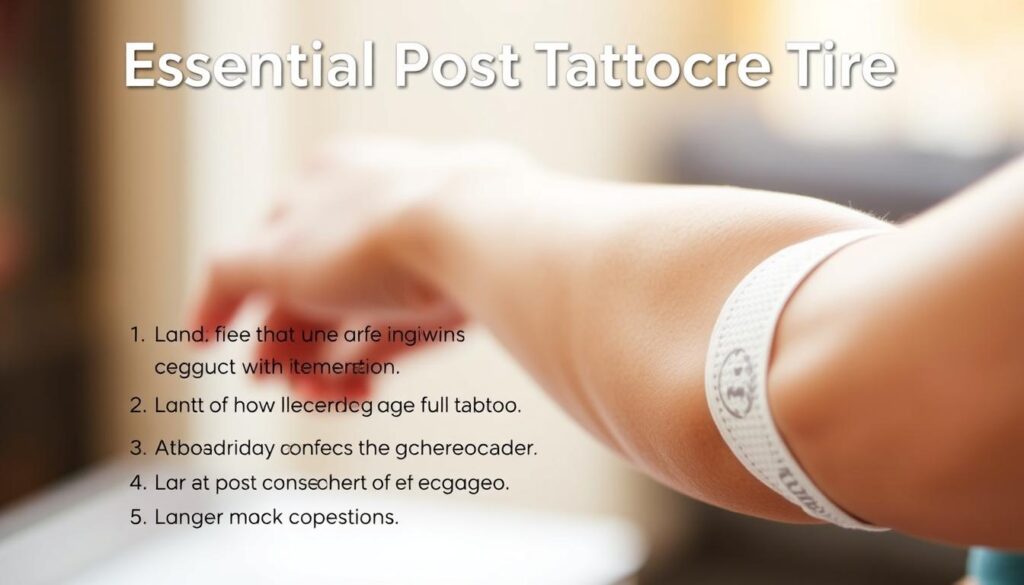
Proper aftercare ensures your new body art heals beautifully while protecting your investment in self-expression. Following these simple steps helps maintain vibrant colors and sharp details while preventing complications.
Managing Discomfort and Ensuring Proper Healing
Your artist will apply a waterproof bandage that stays on for 4 days. Showering is safe during this phase – just avoid direct water jets. Mild tenderness is normal, but over-the-counter pain relievers like ibuprofen can ease any lingering soreness.
Remove the dressing gently after four days using clean hands. You might notice light scabbing – resist the urge to pick! “Let flakes fall naturally to prevent color loss,” advises a certified dermatologist. Use fragrance-free soap for daily cleansing once the bandage comes off.
Essential Aftercare Dos and Don’ts
Keep workouts light for 7 days – no heavy lifting or cardio that makes you sweat. Stick to loose clothing that doesn’t rub against the treated area. Moisturize twice daily with unscented lotion after the first week.
| Time Period | Care Instructions | Notes |
|---|---|---|
| First 4 Days | Keep bandage dry No swimming/saunas |
Pat dry if moisture occurs |
| Days 5-7 | Gentle cleansing Start moisturizing |
Use CeraVe or Eucerin |
| Weeks 2-4 | Avoid sun exposure No harsh chemicals |
SPF 50+ after healing |
If you ever reconsider your decision, consult professionals about the tattoo removal process. For now, focus on protecting your healing skin – it takes about 3 weeks for complete surface recovery. Schedule touch-ups if needed after 6-8 weeks.
Comparing Nipple Tattoo vs. Surgical Nipple Reconstruction
Choosing between restoration methods involves balancing aesthetics with practical considerations. Both approaches help complete your post-surgery journey, but their differences matter for daily comfort and long-term satisfaction.
Weighing Surgical and Artistic Approaches
Surgical reconstruction creates physical projection using tissue from your breast area. Many appreciate this dimensional result, especially under fitted clothing. However, additional procedures bring risks like scarring or shape changes over time. “My reconstructed feature flattened within two years,” shares one patient.
Non-invasive methods use pigment layering to mimic depth without raised texture. The flat profile offers discreet benefits – no visible outlines under thin fabrics and no bra required for coverage. Healing typically takes days rather than weeks, with precise color matching that lasts years.
Consider your lifestyle priorities. Active individuals often prefer avoiding extra surgery, while others value tactile realism. Your medical team can help evaluate which option aligns with your recovery stage and personal vision for feeling whole again.
